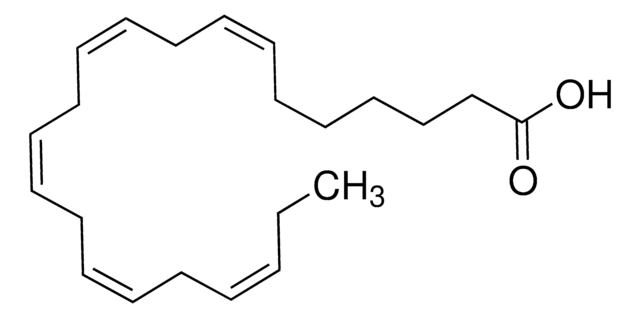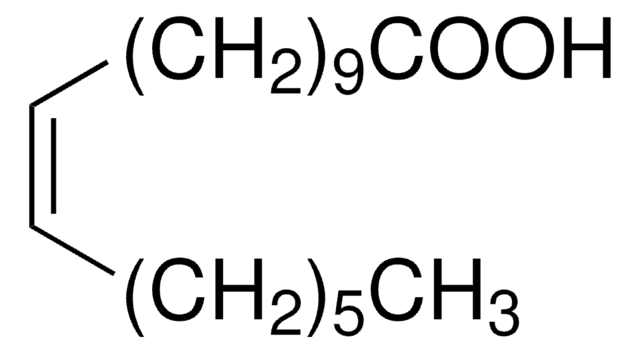E3127
cis-11,14-Eicosadienoic acid
≥98%, liquid
Synonyme(s) :
11,14-Eicosadienoic acid
About This Item
Produits recommandés
Source biologique
plant
Niveau de qualité
Pureté
≥98%
Forme
liquid
Point d'ébullition
198 °C/0.08 mmHg (lit.)
Application(s)
food and beverages
Groupe fonctionnel
carboxylic acid
Type de lipide
omega FAs
Conditions d'expédition
ambient
Température de stockage
−20°C
Chaîne SMILES
CCCCC\C=C/C\C=C/CCCCCCCCCC(O)=O
InChI
1S/C20H36O2/c1-2-3-4-5-6-7-8-9-10-11-12-13-14-15-16-17-18-19-20(21)22/h6-7,9-10H,2-5,8,11-19H2,1H3,(H,21,22)/b7-6-,10-9-
Clé InChI
XSXIVVZCUAHUJO-HZJYTTRNSA-N
Vous recherchez des produits similaires ? Visite Guide de comparaison des produits
Catégories apparentées
Conditionnement
Code de la classe de stockage
10 - Combustible liquids
Classe de danger pour l'eau (WGK)
WGK 3
Point d'éclair (°F)
143.6 °F - closed cup
Point d'éclair (°C)
62 °C - closed cup
Certificats d'analyse (COA)
Recherchez un Certificats d'analyse (COA) en saisissant le numéro de lot du produit. Les numéros de lot figurent sur l'étiquette du produit après les mots "Lot" ou "Batch".
Déjà en possession de ce produit ?
Retrouvez la documentation relative aux produits que vous avez récemment achetés dans la Bibliothèque de documents.
Les clients ont également consulté
Notre équipe de scientifiques dispose d'une expérience dans tous les secteurs de la recherche, notamment en sciences de la vie, science des matériaux, synthèse chimique, chromatographie, analyse et dans de nombreux autres domaines..
Contacter notre Service technique













